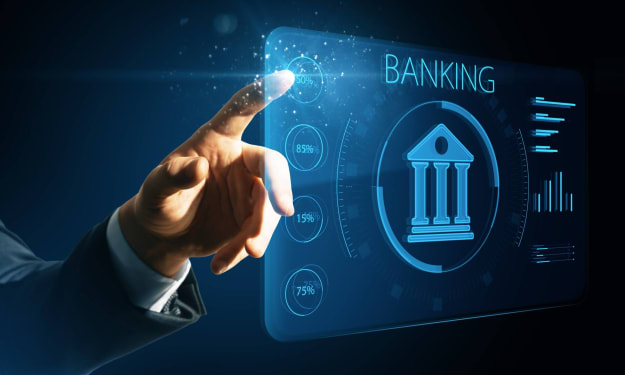Cryptocurrency
The Blockchain technology

Blockchain technology is a decentralized, distributed ledger system that underlies cryptocurrencies like Bitcoin and Ethereum. It enables the secure and transparent recording of transactions and data across multiple computers or nodes within a network.
Structure:
A blockchain is a chain of blocks, where each block contains a set of transactions or data. Each block is linked to the previous block through a cryptographic hash, creating a sequential and tamper-resistant chain of information. The structure of a block typically includes a header containing metadata, a timestamp, and a unique identifier (hash), along with the actual data or transactions.
Consensus Mechanisms:
Consensus mechanisms are used to ensure agreement among the participants of the blockchain network on the validity of transactions and the order in which they are added to the blockchain. Some popular consensus mechanisms include:
Proof of Work (PoW): This mechanism, used by Bitcoin, requires participants (miners) to solve complex mathematical puzzles to validate transactions and add new blocks. It requires significant computational power, making it secure but energy-intensive.
Proof of Stake (PoS): In a PoS consensus, participants (validators) are chosen to create new blocks based on the amount of cryptocurrency they hold and "stake" in the network. It is energy-efficient compared to PoW but still secures the network.
Delegated Proof of Stake (DPoS): DPoS is a variation of PoS where participants vote for a limited number of trusted delegates who take turns producing blocks. It offers faster transaction confirmation times but is more centralized.
Practical Byzantine Fault Tolerance (PBFT): PBFT is a consensus mechanism used in permissioned blockchain networks. It requires a predetermined number of nodes to reach a consensus on transactions, ensuring fast and final transaction confirmation.
Potential Applications Beyond Cryptocurrencies:
While cryptocurrencies popularized blockchain technology, its potential applications extend beyond digital currencies. Some notable areas where blockchain technology can be applied include:
Supply Chain Management: Blockchain can improve transparency and traceability in supply chains by recording and verifying the movement of goods, reducing fraud, counterfeiting, and enhancing efficiency.
Healthcare: Blockchain can securely store and share patient data, enable interoperability between healthcare providers, and streamline processes like medical record management, drug provenance, and clinical trials.
Voting Systems: Blockchain can provide a transparent and tamper-resistant platform for secure voting, ensuring the integrity of the electoral process and enhancing trust in democratic systems.
Financial Services: Blockchain has the potential to streamline and automate processes in areas like cross-border payments, remittances, trade finance, and identity verification, reducing costs and increasing efficiency.
Decentralized Applications (DApps): Developers can leverage blockchain platforms to build decentralized applications, enabling peer-to-peer transactions, smart contracts, and new business models.
Intellectual Property Protection: Blockchain can create immutable records of intellectual property rights, simplifying the registration, transfer, and licensing of assets such as patents, copyrights, and trademarks.
Indeed, blockchain technology has the potential to revolutionize the real estate industry by streamlining property transactions, automating title transfers, and enhancing transparency in property ownership records. Here's a closer look at how blockchain can benefit the real estate sector:
Efficient Transactions: Traditional real estate transactions often involve multiple intermediaries, paperwork, and manual processes, leading to delays, increased costs, and potential errors. By leveraging blockchain, property transactions can be digitized, allowing for secure and efficient peer-to-peer transactions without the need for intermediaries. Smart contracts, self-executing agreements coded on the blockchain, can automate and streamline the entire transaction process, including payment transfers, escrow arrangements, and contract enforcement.
Title Transfers and Ownership Records: Blockchain can provide a decentralized and immutable ledger for recording property ownership records and title transfers. Instead of relying on disparate and potentially vulnerable paper-based records, a blockchain-based system can securely store and manage property ownership information. This eliminates the need for time-consuming and costly title searches, reduces the risk of fraud, and provides a transparent and auditable history of property ownership.
Increased Transparency: Blockchain technology introduces transparency and trust to the real estate market. Each transaction recorded on the blockchain is visible to all participants in a secure and tamper-resistant manner. This transparency reduces the risk of fraudulent activities, ensures that property information is accurate and up to date, and builds trust among buyers, sellers, and other stakeholders.
Fractional Ownership and Tokenization: Blockchain enables the concept of fractional ownership, allowing multiple investors to own a portion of a property. Through tokenization, a property can be divided into digital tokens that represent shares of ownership. These tokens can be easily bought, sold, and traded, providing liquidity and opening up real estate investment opportunities to a broader range of investors.
Real Estate Crowdfunding: Blockchain technology can facilitate real estate crowdfunding platforms by enabling efficient and transparent investment processes. Investors can contribute funds through cryptocurrencies, and smart contracts can automatically distribute returns and enforce investment rules. This opens up real estate investment to a larger pool of investors, including those who may not meet traditional investment thresholds.
Property Data and Due Diligence: Blockchain can be used to securely store and verify property-related data, such as property histories, building permits, environmental assessments, and legal documents. This allows for easier due diligence processes, reducing the time and effort required to verify property information and improving the overall transparency and reliability of the real estate market.
These are just a few examples of the potential applications of blockchain technology. As the technology evolves and matures, its impact is expected to expand across various industries, offering increased transparency, security, and efficiency in different sectors.





Comments
There are no comments for this story
Be the first to respond and start the conversation.